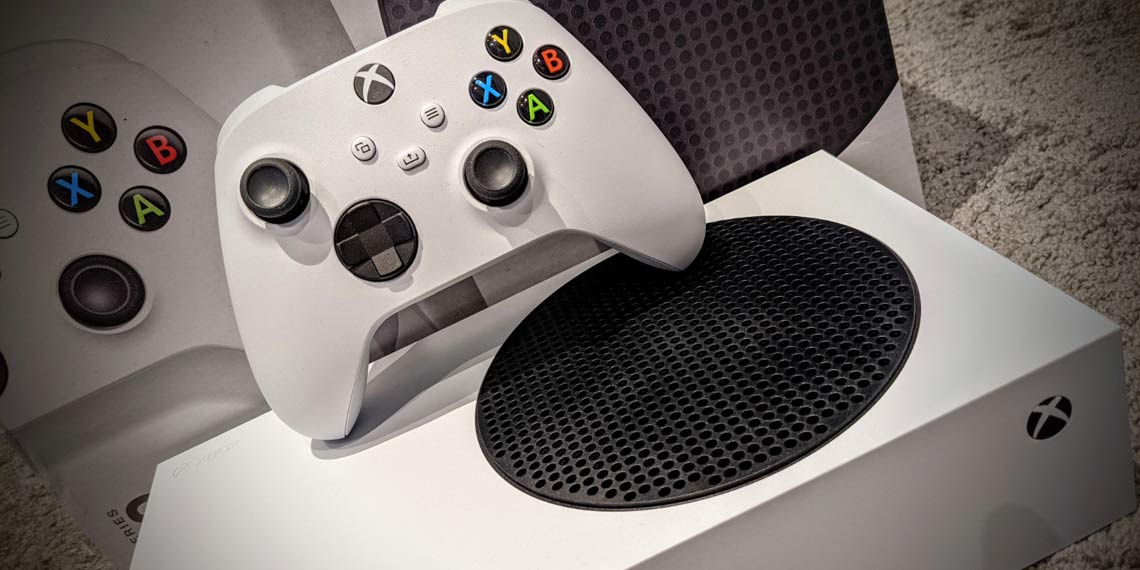After the excellent impressions on the Core i5-12600K (Review), today we will put the top of the range Intel "Alder Lake-S", ie the much talked about Core i9-12900K, under pressure.
At a distance of about a month after the launch and the first independent reviews, the argument Alder Lake was repeatedly gutted, highlighting strengths and weaknesses - it depends on your point of view - of the Intel desktop platform baby girl, data in hand, it still represents a new benchmark in the high-performance consumer segment.
In previous articles we discussed the innovations introduced by the company with the Alder Lake-S CPUs: starting from the new hybrid architecture combined with the Intel 7 production node (10nm SuperFin Enhanced), passing through DDR5 memories, PCI-E 5.0 support and, last but not least, the next generation Intel Z690 chipset.
Before reviewing and commenting on technical specifications and benchmarks, in our opinion, however, we need to make a small premise on the Core i9-12900K, a CPU that from some points of view we can define as almost extreme, at least considering the potential "enclosed" by Intel in this particular chip. The speech could actually also be extended to other Intel K series models (the i9-11900K is no exception), but with this Alder Lake-S model the generational leap in the consumer desktop segment is clear, moving to what are the footsteps of HEDT (High End Desktop) processors.
For this reason, some considerations or positions on this type of CPU are in our opinion now superfluous and outdated; we are faced with a 16-core processor pushed to the limit already at the factory (or almost), a solution with unlocked TDP that in essence can operate at its maximum capacity with frequencies that touch 5.2 GHz, among other things widely overcome with a simple overclock. Taking these characteristics into account, it would be useless and somewhat senseless to pretend to cool this Core i9 with a classic air cooler or, even worse, to manage it with a motherboard lacking in terms of VRM to save a few euros. Everything must be sized, from the heatsink to the motherboard (including memories), requiring components of a certain level which, needless to say, has a cost that places these configurations in the high end of the market.
This premise, which could very well be included in the conclusions, is instead in our opinion the right key to better interpret the tests and results that we will see today in this article; we will then try to take stock of the situation in our final conclusions.
INTEL CORE I9-12900K - DATASHEET
In addition to the innovations already mentioned above, one of the strengths of the Alder Lake-S is certainly the net increase in performance compared to the previous generation "Rocket Lake-S", not only in single-core but above all in multi-core. In this context, the new Core 12th gen outclass their predecessors, beating even the Ryzen 5000 from AMD which, however, remains very competitive in the enthusiast range with the Ryzen 9 5950X.
This leap forward, made possible by the new Intel 7 production node and the consequent increase in the number of cores / threads, also passes through the Golden Cove architecture, well optimized in terms of performance, but above all more efficient than Cypress Cove (Core 11a gen 11900K / 11700K etc). Probably the Core i9-12900K is not the right product to highlight this aspect of Intel Alder Lake, much more pronounced on the "non-K" Core 12th gen models that will arrive shortly on the market. But let's summarize the characteristics of the Core i9-12900K compared to its predecessor - Core i9-11900K - and the other Alder Lake-S models presented by Intel:
The data sheet of the Core i9-12900K does not leave much room for interpretation: we are talking about a 16-core chip which, although using 8 P-Core Golden Cove and 8 E-Core Gracemont, actually doubles the number of physical cores compared to the his ancestor; since the "Gracemont" E-Cores do not support Hyper-Threading, the number of logical threads stops at 24, thus being lower than those of a Ryzen 9 5950X which, with its 16 cores / 32 threads, is however undermined (or beaten) as we will see in different applications.
Performance is guaranteed by very high clock rates - P-Core at 5.2 GHz in single-core with Turbo Boost Max 3.0 mode - even when the chip is operating under maximum load (P-Core at 4.9 GHz all-core ); this is accompanied by a substantial supply of L2 / L3 cache which, from the 20MB of the Core i9-11900K (4 + 16MB), goes to 44MB on the Core i9-12900K (14MB L2 + 30MB L3).
As with the other models of the Core 12th gen series, the new Intel Thread Director takes care of the resources of this "mix of cores", a feature that is fully supported on Windows 11. This does not mean that the performance on the more tested Windows 10 is penalized, on the contrary the opposite is true; however, from the various tests conducted in recent weeks, we can confirm that, although in many applications the performance is practically aligned, the latest version of the Microsoft operating system generally returns the best results, especially if we consider a suite of particularly extensive benchmark / test.
In principle, the entire desktop platform - with its hardware ecosystem - makes a further leap in quality, now supporting DDR5 memories (4800 from specification), the PCI-E 5.0 interface (16 lines managed by the CPU) and guaranteeing - thanks to Intel Z690 chipset - compatibility with the latest connectivity / expansion standards: WiFi 6E, LAN 2.5G, USB 3.2 Gen 2x2 and HDMI 2.1.
Let's not forget the integrated Intel UHD 770 graphics chip, a reinterpretation of the Intel Xe-LP GPU seen on the 11th gen Core which, as we will see shortly in the dedicated section, allows you to try your hand - without too many pretensions we specify - in different games even at 1080p resolution..
Last, not least, the data relating to the TDP and consumption declared by Intel for the Core i9-12900K. As already discussed during the test on the Core i5-12600K, the Santa Clara company has changed its approach compared to the old values of TDP (PL1 and PL2) now reformulated as Processor Base Power (PBP) and Maximum Turbo Power (MTP); substantially it changes little, but it is good to reiterate that this processor operates from the factory with the maximum MTP value ( 241 watts) on virtually all new generation Z690 motherboards (with some variations based on the board model). As we will see in the tests, Intel's data is real but optimistic when we remove the power limits; in general, however, the efficiency of the Core i9-12900K can be defined as good and definitely superior to the Core i9-11900K (which we remember also exceeds 370W under maximum load with AVX instructions).
TEST PLATFORM
The test configuration does not differ from that used for the review of the Core i5-12600K, as well as the suite of benchmarks which, precisely for this reason, allows us to have a clearer picture of the performance of the Core i9-12900K in relation to Core 11th gen and most importantly AMD's Ryzen 5000.
Processors :
Intel Core i9-12900K, Core i5-12600K
Intel Core i5-11600K, Core i7-11700K, Core i9 11900K
AMD Ryzen 5 5600X, Ryzen 7 5800X, Ryzen 9 5900X
Heatsink : ASUS ROG RYUJIN II 360 (LGA 1700), NZXT Kraken X63 (LGA 1200, AM4)
Motherboards :
ASUS ROG Strix Z690-E Gaming WiFi (for Intel Alder Lake-S)
ASUS ROG MAXIMUS XIII HERO (for Intel Rocket Lake-S)
ASUS Prime X570 PRO (for AMD Ryzen 5000)
Memories :
Kingston FURY Beast 32GB (2x 16GB) 5200 MHz CL40
Corsair Vengeance RGB PRO 32GB (2x 16GB) 3600 MHz CL16
Graphics card : NVIDIA GeForce RTX 3080 FE
SSD Storage : Samsung SSD 980 500GB, PNY XLR8 Gaming (CS3030) 2TB
Power supply : Corsair RM1000x 1000W
Operating System : Windows 11 Pro updated to the latest patches (chipset / GPU drivers included)
The Core i9-12900K was joined by the ASUS ROG Strix Z690-E Gaming WiFi and ROG RYUJIN II 360 (Review) duo, a choice that, as we will see now in the tests, proved to be well-sized and allowed us to test the limits (or almost) of this CPU with a non-custom liquid cooling system, highly recommended if you really want to squeeze every single megahertz out of the CPU.
Below is the list of software used to measure performance:
CPU test
Cinebench R15
Cinebench R23
Corona Benchmark
Indigo Benchmark
Blender - BMW scene
7-Zip
WinRAR
PCMark 10
3DMark CPU Test
AIDA64 Extreme AES and SH3 encryption
Mozilla Kraken (Web browsing)
Integrated CPU-Z Benchmark
Games
Far Cry 6
Watch Dogs: Legion
Gear 5
Red Dead Redemption 2
Horizon Zero Dawn
Final Fantasy XIV
Forza Horizon 4
Counter-Strike: Global Offensive
Apex Legends
Metro Last Light Redux
Shadow of The Tomb Rider
TEMPERATURE - CONSUMPTION - OVERCLOCK
Let's start with one of the highlights, namely the behavior of the Core i9-12900K in terms of energy, as well as temperatures and overclocking, the latter element not to be underestimated given the nature of the Intel K series chips. Core i9-12900K is a CPU in some ways extreme, especially when it is set to work with Power Limit unlocked and clock rates are increased. Those who choose this option (practically anyone who buys one) in our opinion must accept the relative compromises in terms of temperatures and consumption which, we anticipate, in some cases exceed the values declared by Intel.
Given the premises, before going further we considered it appropriate to compare the consumption and temperatures of the processor when we go to "lock" or "unlock" the Power Limit (or TDP as you prefer). The graph above highlights that, apart from the test with Prime95 - a non-ordinary scenario - the differences in consumption and temperatures are negligible, a reason that has prompted us in the past to test the processor in completely unlocked mode. As for the 90 ° C reached on Prime95, the result is quite remarkable, however it must be remembered that with these settings the motherboard sets all the parameters automatically (VCORE included) delivering voltages almost always higher than what is really necessary (unfortunately we were not able to test the undervolt).
That said, let's see the result of the Core i9-12900K compared with the other models examined in the test:
With 309 watts peak (entire system), the top-of-the-range Alder Lake-S outperforms its Ryzen 9 5950X rival by over 100W, resulting - as expected - much more efficient than the 11th gen Core i7 / i9. The figure is obviously not surprising given the data sheets: the Core i9-12900K reaches a CPU Power Package of 248 watts, while remaining very close to the 241 watts declared by Intel. We will analyze the performance in the next chapter, but you can already see that the new Intel CPU beats, albeit slightly, the Ryzen 9 5950X (16 cores / 32 threads).
Our Core i9-12900K sample demonstrated excellent overclocking skills, aided - even for temperatures - by the excellent ASUS ROG RYUJIN II 360 liquid AiO system. Again we have established a maximum VCORE to apply for our overclocking., sized to the dissipation capacities of the RYUJIN II; our goal in this regard is not to exceed a VCORE of 1.4250 volts from the BIOS.
With this setting the CPU is able to operate stably with all P-Cores at 5.2 GHz with E-Cores at 4.1 GHz (they go no further), an impressive result that is reflected in the Cinebench R23 test where we exceeded the threshold. of the 30,000 points in multi-core. Always with the same voltage we can set the best P-Cores in the order of 5.4 / 5.5 GHz based on the load. Obviously we weren't happy and with a small boost to 1.43 Volt we ripped another 100 MHz into single-core which allowed us to close Cinebench at 5.6 GHz :
2,141 points is a monstrous score in single-core, think that a Ryzen 9 5950X stops at around 1,630 points, while a Core i9-11900K reaches almost 1,600. If you are wondering how much the Core i9-12900K consumes with all P-Cores running at 5.2 GHz, the answer is 285 watts, more or less 45 watts more than the factory settings (at least for this example).













